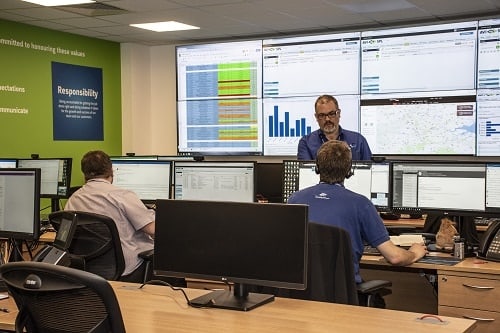I checked in with Michael Coleman, AVI-SPL national help desk manager, to see how his team is handling the challenges of being fully remote while teaching users to also be remote. Many of those users may not have routinely engaged video or collaboration technology. Michael gave me the rundown on how questions from users have changed and the best strategies for companies to ensure all their users are collaborating to their full potential. Common questions include:
- “Which platform is best for video conferencing? I have Skype, and Cisco, and Teams on my computer – which do I use?”
- “Which platform is best for webinars?”
- “How do I get my audio to work?”
- “How do I handle recordings?”
- And Michael’s favorite – “How do I do that potato thing?”
It’s clear that end users are trying hard to collaborate, but there are some basic questions and guidelines for your IT and AV departments to address to ensure your users are well educated on video collaboration and your chosen flavor of product. This drives user satisfaction and ensures security of communications and corporate files. Let’s take a look again at those FAQ’s and provide some answers.
“What platform is best for video conferencing? I have Skype, and Cisco, and Teams on my computer – which do I use?
UCC/AV management teams can help users by providing a user guide or other clear messaging, such as:
- Teams is our preferred collaboration platform. We use this application for chat, file sharing, and availability.
- Pexip is our preferred video meeting application.
The major collaboration providers have made a suite of resources available for end-user training and adoption. Place these in an easily accessible location so users can begin with self-help and education. We have created a listing of these resources on our AVI-SPL website. It’s also a good idea to identify platforms that your users may be asked to join in meetings with other companies – and provide basic help documentation – so they can better understand the differences and your corporate preferences.
User experience has a huge impact on the adoption, satisfaction, and usage of collaboration and video conferencing applications. On the management side, ensuring meetings can be scheduled with one click in Outlook (or your preferred email application) serves to greatly reduce confusion and improves the user experience.
“Which platform is best for webinars”
Your preferred collaboration platform may be your preferred solution for webinars, but if you have an alternate solution, be sure to have additional instructions available for this platform, including when it should be used. As dozens of in-person events have moved to digital formats, it’s important to ensure you have a webinar platform that allows in only who have permission, and that its information can’t be grabbed by those not invited. As for which is best — that’s a question with a number of relative answers. A variety of platforms offer different benefits, drawbacks, and cost structures.
“How do I get my audio to work?”
The most common problem we’ve seen recently is users who know how to get started but quickly run into frustrating issues that may cause them to revert back to a phone or other less feature-rich methods that reduce the ability to collaborate, not just work. While some users may not understand the need to dial in with their phone when their computer is connected to a meeting, many users are running into poor audio quality due to equipment that was not designed for daily use.
Ensure your end users are equipped with proper technology to achieve a quality collaboration experience. With the variety of distractions that can exist in the home office when spouses, children, and pets are together all day, the basic webcam and microphone included in a computer, or the headphones included with their cell phone, may not cut it for a full work day on a regular basis. AVI-SPL has a variety of work-from-home bundles that can solve this challenge.
“How do I handle recordings?”
The answer to this question depends on the underlying recording solution selected by your organization. Many times, a recording may seem to “disappear” after it is completed, making it a challenge for the recording employee to find the file. Or the file may be too large to share easily. Add instructions to your corporate UCC/AV user guide on how to use recording, when to use recording, and how to access files.
“How do I do that potato thing?” / “How do I use a virtual background”
Luckily, these questions are very easily addressed. Zoom offers a tutorial. And AVI-SPL published a video walkthrough for Microsoft Teams. Branded corporate images are a great idea for custom backgrounds. Consider building yours today!
If you have any questions about ways to improve support for your users, contact us now or call your local AVI-SPL office.

